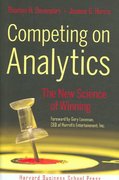
using the following template:
Materiality:
- Who are the Financial statement Users and what are their concerns?
- The Financial statements report the following:
| Item | $ Amount Current Year | Benchmark applied | Possible Materiality |
| | | | |
| | | | |
- Any qualitative considerations?
Performance Materiality
Conclusion:
- Planning Materiality
- Final Materiality
Atlantic Academy is a private school that offers education to children from Kindergarten to Grade 7. The school operates as a not-for-profit entity and oversight of the school is performed by the board of directors. The board reviews the operational and financial results monthly to ensure the school is meeting its budget responsibilities. Revenues for the school generally come from three sources: student tuition, government funding, and various fundraising programs seeking additional funds for specific purposes. Government funding is provided based on the number of students enrolled, and the funds are to be spent only on the provision of education services. A requirement of the government funding is that the school must submit annual audited financial statements. Jones and Black, CPAs, are the auditors of Atlantic Academy. Their firm policy is to use the following percentages when determining materiality: 5% of normalized pre-tax profit 1% of total assets 2% of equity 2% of revenues or expenditures Performance materiality is to be 65% of planning materiality. Select financial data for Atlantic Academy are provided below: 2020 2019 Revenue $1,186,000 $1,229,000 Expenses 1,607,000 1,160,000 Income from continuing operations (421,000) 69,000 Total assets 3,419,000 2,928,000 Required Determine materiality and performance materiality. Atlantic Academy is a private school that offers education to children from Kindergarten to Grade 7. The school operates as a not-for-profit entity and oversight of the school is performed by the board of directors. The board reviews the operational and financial results monthly to ensure the school is meeting its budget responsibilities. Revenues for the school generally come from three sources: student tuition, government funding, and various fundraising programs seeking additional funds for specific purposes. Government funding is provided based on the number of students enrolled, and the funds are to be spent only on the provision of education services. A requirement of the government funding is that the school must submit annual audited financial statements. Jones and Black, CPAs, are the auditors of Atlantic Academy. Their firm policy is to use the following percentages when determining materiality: 5% of normalized pre-tax profit 1% of total assets 2% of equity 2% of revenues or expenditures Performance materiality is to be 65% of planning materiality. Select financial data for Atlantic Academy are provided below: 2020 2019 Revenue $1,186,000 $1,229,000 Expenses 1,607,000 1,160,000 Income from continuing operations (421,000) 69,000 Total assets 3,419,000 2,928,000 Required Determine materiality and performance materiality







